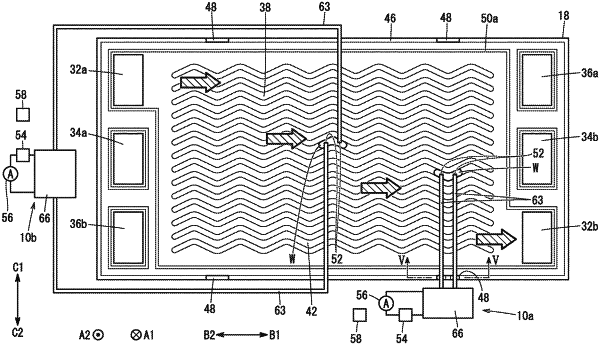| CPC G01N 27/48 (2013.01) [G01N 33/18 (2013.01); H01M 8/045 (2013.01); H01M 2008/1095 (2013.01)] | 4 Claims |

|
1. A method of water detection for detecting presence or absence of liquid water within a reactant gas flow field through which a reactant gas flows along a membrane electrode assembly of a power generation cell, the method comprising:
a voltage applying step of applying a voltage to a pair of electrodes provided at a position facing the reactant gas flow field, the electrodes being spaced from each other, the voltage changing within an application range that includes a first voltage and a second voltage, the first voltage being smaller than an electrolysis voltage of the water, the second voltage being larger than the electrolysis voltage of the water; and
a judging step of judging presence or absence of water within the reactant gas flow field, based on change in electric current flowing between the pair of electrodes measured by a current measuring unit when the voltage changing within the application range is applied to the pair of electrodes,
wherein:
a measuring limit of the current measuring unit is set smaller than electric current that flows between the pair of electrodes when the voltage within the application range is applied to the pair of electrodes that are in short-circuit condition, and
in the judging step, the water is judged to be present between the pair of electrodes in a case that a second current measured by the current measuring unit when the second voltage is applied to the pair of electrodes is larger than a first current measured by the current measuring unit when the first voltage is applied to the pair of electrodes.
|